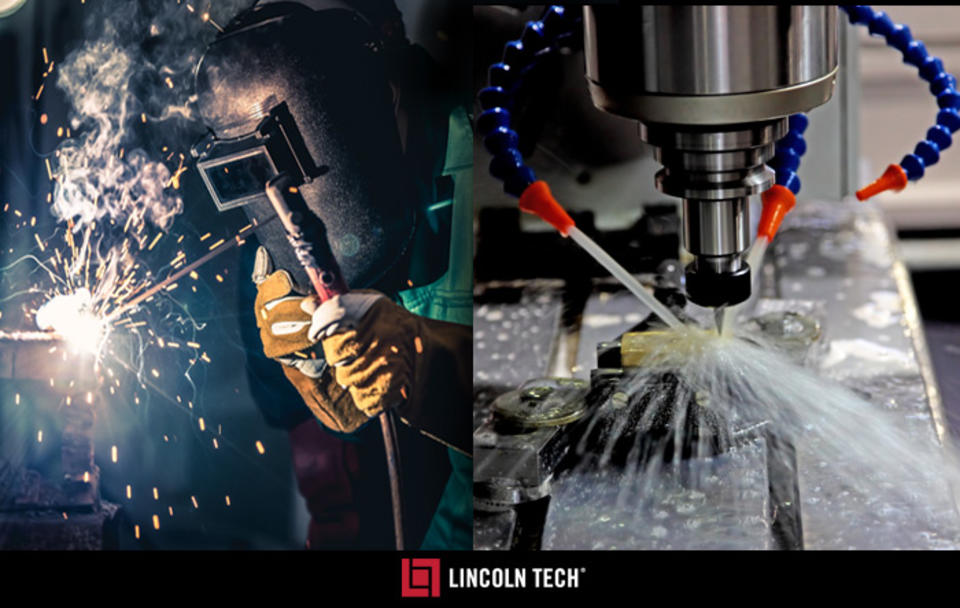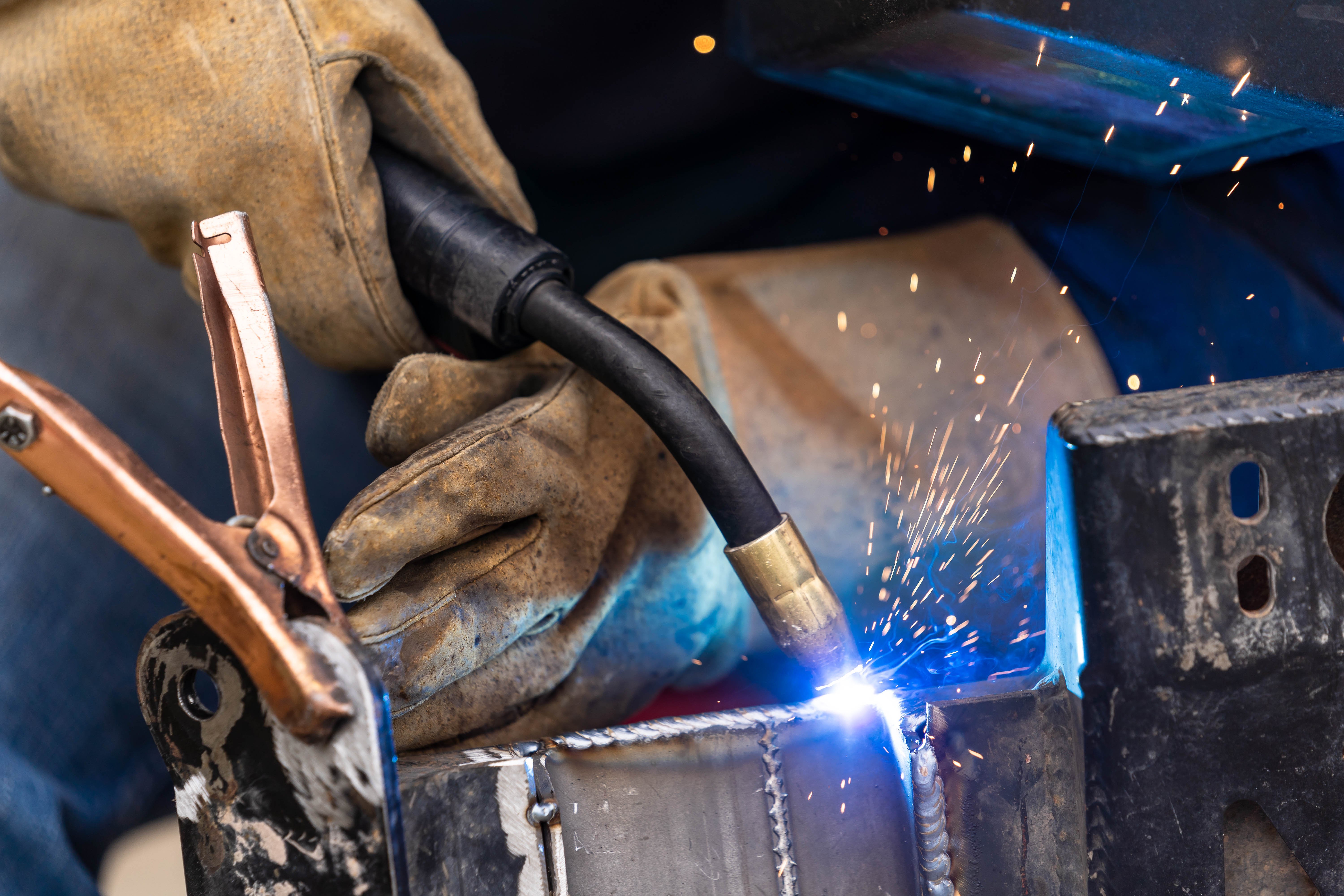All Regarding Welding: Key Insights Into Techniques and Ideal Practices for Success
Welding includes a selection of methods, each matched for details materials and applications. Understanding these methods, such as GMAW, SMAW, and TIG, is crucial for attaining ideal results. The right equipment and safety and security methods can not be neglected. As prep work and repairing play essential functions in the welding process, grasping these components can significantly boost the quality of the end product. What are the essential factors that ensure an effective weld?
Recognizing Various Welding Techniques
Welding methods encompass a range of methods, each matched to details applications and materials. Amongst the most typical strategies are Gas Metal Arc Welding (GMAW), Shielded Metal Arc Welding (SMAW), and Tungsten Inert Gas Welding (TIG) GMAW, also referred to as MIG welding, is preferred for its rate and convenience, making it optimal for thin products. SMAW, or stick welding, is favored for its simpleness and effectiveness in outside environments, specifically with thicker metals. TIG welding provides precision and control, making it suitable for complex work and non-ferrous metals (Montana Mobile Welding and Repair Belgrade). Each method has its one-of-a-kind advantages and factors to consider, enabling welders to pick the very best technique based upon the project's needs, material type, and desired end results. Understanding these strategies is important for effective welding
Essential Welding Equipment and Devices
While numerous welding methods need specific skills, the appropriate equipment and tools are similarly crucial for achieving high quality outcomes. Essential welding equipment includes welding equipments, which vary depending on the technique-- such as MIG, TIG, or stick welding. Safety gear, including aprons, handwear covers, and safety helmets, warranties safety and comfort throughout the process. On top of that, fixtures and clamps aid safeguard products in area, ensuring accuracy in welds. Consumables like welding rods, wire, and shielding gas are additionally critical components that affect the top quality of the weld. Tools such as cutters and mills assist in surface prep work and post-weld finishing, adding to an expert end result. Purchasing top notch equipment inevitably enhances the efficiency and efficiency of welding projects.
Safety And Security Practices in Welding
Correct security methods are crucial in the welding market to safeguard employees from prospective risks. Welders need to wear appropriate individual safety devices (PPE), including safety helmets with proper shading, handwear covers, and flame-resistant apparel. Appropriate air flow is important to decrease direct exposure to unsafe fumes and gases produced during the welding process. Additionally, employees should be educated in the appropriate handling of welding tools to stop accidents. Fire precaution, such as maintaining flammable products away from the welding area and having fire extinguishers conveniently available, are needed. Regular examinations of equipment and workspaces can aid identify potential risks before they bring about accidents. By adhering to these safety and security methods, welders can develop a much safer working setting and decrease threats connected with their profession.
Readying Products for Welding
Preparing products for welding is an important action that significantly influences the quality and stability of the end product (Belgrade Welding). Proper preparation involves cleaning the surface areas to get rid of contaminants such as corrosion, dirt, and oil, which can compromise the weld. Methods such as grinding, fining sand, or utilizing solvents are frequently used to accomplish a clean surface. Furthermore, guaranteeing that the materials mesh comfortably is vital; spaces can cause weak welds. It's additionally important to take into consideration the alignment and positioning of the elements, as this will affect the ease of welding and the final end result. Choosing the appropriate filler material and ensuring compatibility with the base steels is crucial for accomplishing strong, sturdy welds.
Tips for Achieving High-Quality Welds
Accomplishing top quality welds requires attention to detail and adherence to best methods throughout the welding procedure. Correct joint preparation is important, making sure surface areas are clean and free from pollutants. Choosing the ideal filler product and welding method based upon the base steels is crucial for suitable bonding. Keeping constant traveling speed and angle while welding can avoid flaws and advertise harmony. In addition, regulating warmth input is important; extreme warm can result in warping and weakened joints. Consistently inspecting the welds throughout the process enables immediate adjustments if essential. Using suitable post-weld treatments, such as cleaning and tension alleviation, can enhance the toughness and honesty of the weld, eventually ensuring an effective result.
Repairing Common Welding Issues
Welding usually presents difficulties that can affect the top quality and stability of the end product. Common issues such as porosity, irregular weld beads, and overheating can occur, each requiring specific fixing techniques. Understanding these troubles is essential for welders to enhance their abilities and attain excellent results.
Porosity Troubles Clarified
Porosity can often be neglected, it continues to be a critical issue in welding that can endanger the integrity of a completed product. Porosity describes the presence of tiny gas pockets within the weld bead, which can lead and weaken the joint to early failing. This problem typically arises from pollutants, dampness, or incorrect shielding gas protection during the welding process. To reduce porosity, welders need to verify that the base materials are completely dry and tidy, utilize appropriate protecting gases, and keep regular welding parameters. Frequently evaluating the tools and environment can likewise aid recognize possible problems prior to they show up in the weld. Dealing with porosity successfully is essential for accomplishing strong, resilient welds that meet high quality requirements.

Inconsistent Weld Beads
Irregular weld beads can significantly impact the high quality and toughness of a finished item. Various variables add to this concern, consisting of incorrect traveling rate, incorrect amperage settings, and inconsistent electrode angles. When the welder relocates too quickly, a bead may appear narrow and lack penetration, while relocating too gradually can trigger extreme try these out buildup. In addition, utilizing the wrong amperage can lead to either undercutting or extreme spatter, both of which concession weld honesty. The welder's method, such as inconsistent torch motion, can likewise bring about irregular grain look. To reduce these problems, welders ought to concentrate on maintaining constant, controlled motions and making certain correct equipment settings to attain harmony in their welds. Consistency is crucial to attaining dependable and solid welds.
Getting Too Hot and Bending Issues
Too much warmth throughout the welding process can result in considerable getting too hot and contorting concerns, impacting the architectural integrity of the workpiece. These problems frequently materialize as distortion, which can endanger alignment and fit-up, making further setting up testing. Factors adding to overheating include the selection of welding parameters, such as voltage and travel rate, in addition to the sort of material being bonded. To mitigate these issues, welders should keep consistent traveling speed and proper warm input while monitoring the workpiece temperature level. In addition, pre-heating or post-weld warmth therapy can help relieve tensions brought on by fast air conditioning - Belgrade. Routine examination and adherence to finest practices are crucial in stopping overheating and making certain the long life and dependability of welded structures
Frequently Asked Inquiries
What Are the Occupation Opportunities in the Welding Industry?
The welding market supplies diverse occupation chances, consisting of settings as welders, engineers, teachers, and inspectors. Professionals can function in manufacturing, building and construction, aerospace, and automobile markets, taking advantage of solid need and competitive salaries in numerous duties.
How Can I Enhance My Welding Rate Without Compromising High Quality?
To boost welding speed without sacrificing high quality, one must exercise reliable techniques, maintain equipment, optimize settings, and enhance hand-eye coordination. Normal training and looking for comments can also greatly contribute to accomplishing quicker, premium welds.
What Accreditations Are Offered for Welders?
Countless certifications exist for welders, consisting of those from the American Welding see post Culture (AWS), the National Center for Construction Education and Research Study (NCCER), and numerous industry-specific companies. These credentials improve employability and demonstrate skill effectiveness.
Exactly How Does Welding Impact the Qualities of Metals?
Welding affects the buildings of steels by changing their microstructure, which can cause adjustments in ductility, hardness, and strength. Warmth input and cooling prices throughout the process considerably affect these product attributes.
Can I Bonded Dissimilar Metals With Each Other?
